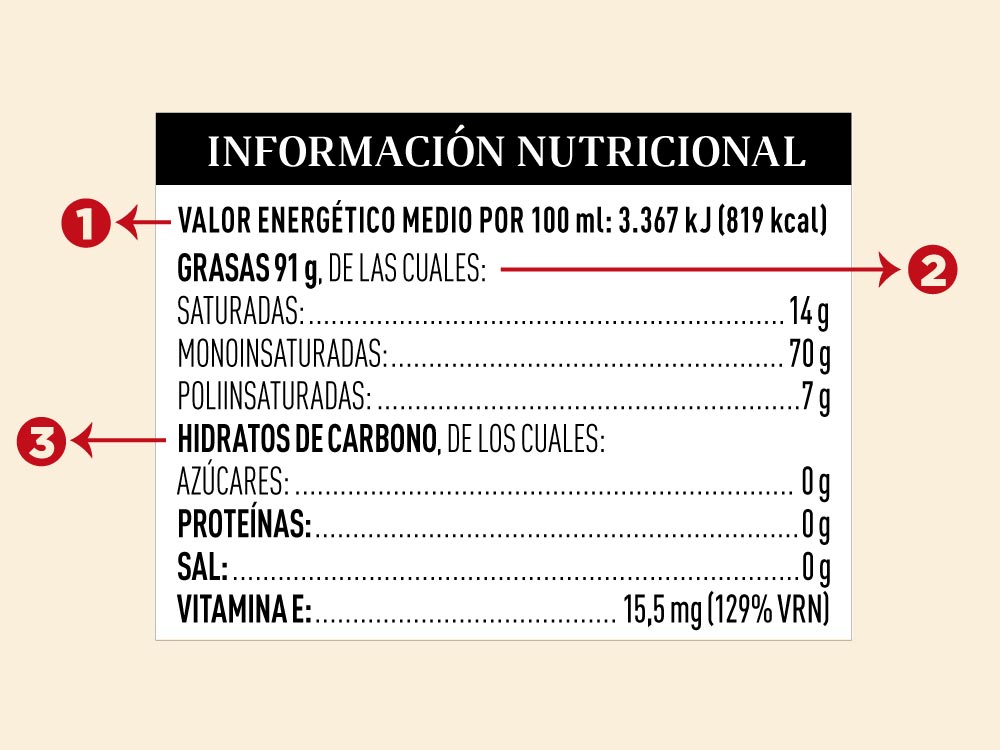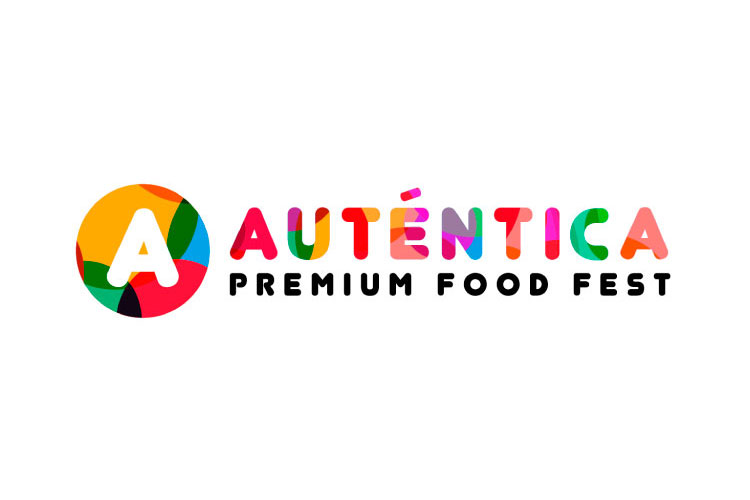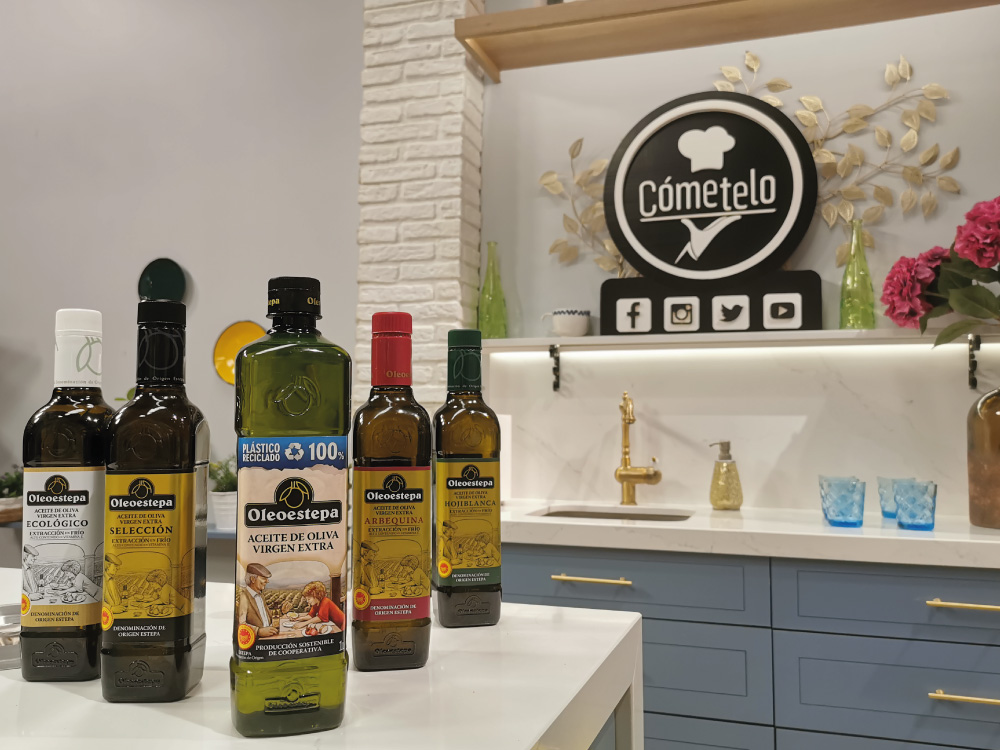Is olive oil fattening? How to read the nutritional table of extra virgin olive oil?
For a long time our food choices have been determined by calories. However, nowadays it is increasingly known that beyond the energy contribution of foods, it is also important to look at their nutrients. That is why extra virgin olive oil is a high-calorie food, but at the same time, one of the most beneficial.
Foods in their natural form can have varying amounts of calories, with vegetable oils being among the most energetic options.
Since oils are made up of 100% fats, they contribute 999 calories per 100 grams, making them one of the most caloric foods in the world.
However, in the case of extra virgin olive oil, which of course is very concentrated in calories, it is at the same time a very beneficial food, to the point of being called liquid gold because of its great value for the human organism.
Besides being a great source of calories, extra virgin olive oil offers antioxidants and polyphenols with anti-inflammatory effect for our body, being at the same time a supplier of unsaturated fats with positive effects on health.
What does each of the elements that appear in the nutritional table of extra virgin olive oil mean?
In general terms, the nutritional table contains information about the amount of energy (calories) and key nutrients found per 100 ml of extra virgin olive oil. They help us understand the amount of calories and the amount of nutrients in the foods we eat and how much they contribute to our diet.
But before inspecting a product’s nutritional table, you should stop to look at the product’s ingredient list. All the ingredients of a product are ordered by weight, that is to say, what contains the most is what should go first. If you detect that the first 4 foods are of good quality, natural, whole, high in protein, are not sugar, contain vitamins, minerals, then you are most likely choosing a good product. On the contrary, discard products whose ingredients include refined flours (more than 70% like wheat), sugar, margarine or hydrogenated vegetable oil (palm, sunflower), among others.
In the case of extra virgin olive oil, only one single ingredient must appear: olive juice, extra virgin olive oil. It may seem obvious, but the regulations state that you cannot label with the designation EXTRA VIRGIN OLIVE OIL if the product includes any additional ingredient.
Below is an example that will help us to explain each of the blocks that make up the nutritional table that appears on the back of the bottles of extra virgin olive oil that you can find on the shelf of your supermarket or regular store.

-
Energy value per 100 ml
The energy value is measured by the calories per 100 ml of EVOO. It is expressed first in kilojoules (kJ) and then in kilocalories (kcal), the most commonly understood value.
This information is useful for comparing similar products per 100 g or 100 ml when the recommended serving size is not provided or when you plan to consume a larger or smaller portion than the serving size.
Calories are the sum of the energy provided by the three most important nutrients (fats, proteins and carbohydrates), so we should not value olive oil as a food in isolation by these. In fact, for the same number of calories, two foods can be very different: one of them could be rich in sugars, and the other of integral origin. It is therefore recommended to pay attention to how its fats are composed.
-
Fat composition
When the fat content is significant, as is the case in olive oil with 91 grams per 100 ml, we cannot fail to look at what its fats are. If there is a predominance of saturated fats, this is an unadvisable product if we want to take care of our health and blood cholesterol. On the contrary, if the fatty acids are mostly monounsaturated and polyunsaturated, it will be beneficial for the organism as a whole. Regarding polyunsaturated fatty acids, they are essential, since the organism does not synthesize them and we can only get them through food. This is the case of extra virgin olive oil, rich in “good” fats which, for example, help to reduce LDL cholesterol levels.
In this section, it is important to ensure that the transaturated fat content is kept to a minimum, as they are unhealthy for the organism. They are created by industries where processed and hydrogenated fats are used. Since olive oil is of natural origin, it does not contain this type of fat that is so harmful to the organism.
-
List of nutrients
In a healthy diet we must also try to control the rest of the nutrients that appear in the nutritional table.
In general terms, it is advisable to consume more of the nutrients that are at the bottom of the list, such as vitamins, calcium and iron, but be careful, sugar is at the bottom of this list, being the exception to this recommendation, since we must control its consumption.
In relation to the contribution of carbohydrates, it is detailed which of the total carbohydrates are sugars, being advisable that most of the products that we acquire do not present more than 10% of sugars. If sugars are not described, we must refer to their ingredients and see if they contain sugar, fructose, sucrose or honey among their ingredients. If these names appear in the list of ingredients, it is because the product contains sugars and should be taken into account in a healthy diet, and even more so in the case of people with high triglycerides or diabetes, for example. In the case of EVOO, its content is zero, and its consumption is recommended for people with diets that limit sugars.
As regards salt (sodium), the ideal is not to consume more than 2,000 milligrams in a day, according to the recommendations of the World Health Organization (WHO).
Finally, in the case of extra virgin olive oil, it is worth mentioning its vitamin E content, which is higher the higher its quality. Vitamin E contributes to the protection of cells against oxidative damage.
We hope that all this information will help us to understand what we consume regularly, the nutrients in extra virgin olive oil and that we are not victims of misleading advertising.





